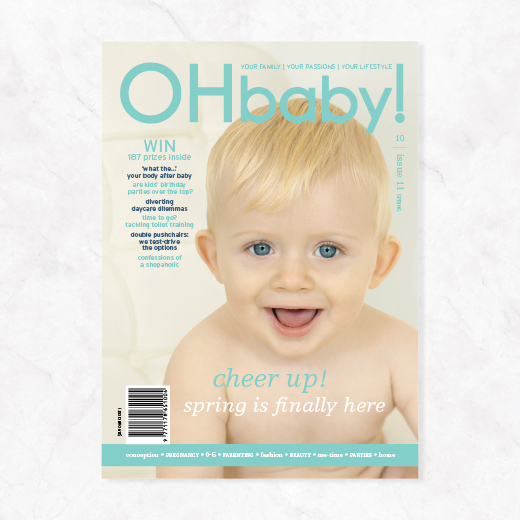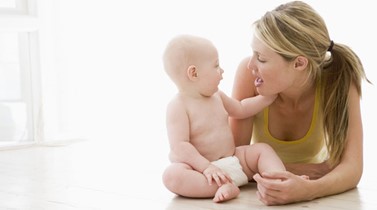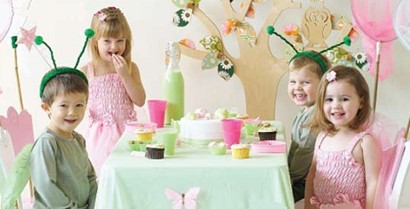Strategies and tips for a smooth childcare transition

The heart-wrenching sobs and the rather awkward leg cling-on need not be an ongoing part of your childcare drop-off routine. Early childhood educator Michelle Hewlett shares some strategies for settling.
Whether your child is starting with a childcare centre, kindy, home-based childcare, au pair, or nanny, here are some tips to assist your whole family through the settling process.
Making the choice to start your child in childcare is a huge decision and one that you need to be emotionally ready for in order for your child to settle. It's important not to show your child any negative emotions you may be feeling about leaving them in childcare. Children can easily pick up on these feelings, which will make them apprehensive and anxious about coming.
Is childcare a good choice for my child? In 2008, 95% of all Kiwi children under the age of five were enrolled in some sort of early childhood education. Studies show that early childhood participation can lead to positive social and academic skills, which set children up for a lifetime of learning (Tolley, 2009).
It's important for you and your child to become comfortable with the routines and rituals of the centre, home-based caregiver, nanny, or au pair, so you both know what to expect when you start. Getting to know the teachers or caregivers will help you to feel more at ease about leaving your child with them. Having an allocated primary caregiver can further assist the settling process as children have the opportunity to form a close relationship with one staff member (Brownlee, 2008).
During your visits to the centre or caregiver prior to starting, it's good to try and be really boring, so your child wants to move away from you and explore their new surroundings. Be there emotionally for your child. They may need some encouragement and reassurance about starting, as they too will be feeling anxious and unsure about the huge change that is about to occur in their life. Keep explanations about starting care positive and simple so you do not confuse them. For example, tell your child, "Tomorrow is your first day at your new centre. You're going to go to make lots of new friends."
When it's time for the parent to leave, I have observed that children tend to show one of three main characteristics:
The perfect story: Your child slots right in to the centre, makes friends, participates in routines, and shows no signs of issues in settling. This is quiet abnormal, but does happen for some children who have had a lot of social experiences already.
Fine initially, then flip out: On the first few sessions alone, your child is fine, seeming to have settled well into care, then... MELTDOWN! What is going on? They were fine last week! This is hugely alarming for parents and they often feel that something must have gone wrong for their child to suddenly change. What is actually happening is that your child has just realised that you're really gone and the novelty of coming to this new place has worn off. Don't be alarmed if this happens; it is a perfectly normal part of transitioning. Refer to the section below on how to settle your child when this happens.
The loud transition: his really is a parent's heartbreak; a terrible, heavy feeling of emotional pull on your heart as you pry your screaming child's fingers from your hair and shoulder and hand her over. As terrible as this is for all parents, once you have made the decision to leave, you must leave, and preferably quickly. Prolonging the process or returning when they are upset is only going to make things worse, as this confuses your child. You need to work closely with the teachers and caregivers so they can be ready to assist you through this process. It is perfectly natural for you to become emotional throughout the process, but please, if you are going to have leaky eyes, it's a good idea to wait till you are out of sight of your child (since you've already told them how happy you are that they are going to be in this new place!).
After your child has attended a couple of sessions, the crying may start the morning of daycare or in the car on the way there. This is also normal, as anxiety rises at the thought of you leaving. Maintaining calmness during this time encourages your child to realise that you are confident in their ability to settle and have fun with you gone. If the same procedure is carried out prior to arriving and during the drop off, your child will begin to understand that you will come back for them, and it actually starts to become fun to be at childcare. Once your child gains a sense of belonging, they will start exploring their surroundings, and begin to engage in social activity and develop a passion for knowledge that sets them up for a lifetime of learning.
So what happens after I leave?
Every child is different; therefore, it's up to teachers to judge the situation after you leave. Remember, every childcare centre has their own philosophy on how to assist children through the settling process. Ask your centre about the strategies they will use when settling your child. Some children want to be physically comforted, and have a cuddle or rub on the back to help them through the process. Others wish to be left alone. When this happens, it is good for teachers or caregivers to respect the child's choice and either leave the child to self-soothe, approaching him/her at five-minute intervals to offer comfort or company. Or the teacher can sit next to the child (if it's wanted) and be simply there to support the child in their choice they have made for settling. In their own time, your child will decide it's rather boring where they are, and seek social interaction or explore this new and exciting environment that is eager to be discovered (Gerber and Johnson, 1998).
When it's time for pick-up
You've peeked through the door to see your child playing happily, but when they see you, they explode into tears again! But they should be happy to see you, right?
They are, but seeing you reminds them of the separation that took place a few hours earlier. This, too, will lessen as time goes on. Occasionally, a settled child will do this for other reasons; for example, if they have lost their favourite teddy or stopped using their dummy. As adults, we need to remember that a child's world is much smaller than ours, and it takes only the tiniest of things to upset it.
Each time your child will cry less and less and eventually come to terms with the separation process. Be prepared for this to take a few weeks, depending on how many days a week your child is in childcare. The bigger the gap between sessions, the longer the settling process can be. Persevere and work with your child's teachers to help the settling process and strengthen the bond between you, your child, and the centre or caregiver. Be comforted in knowing that it is a perfectly normal process to go through, and focus on the learning opportunities that await your child.
Tips to help with settling
- Send your child's favourite blanket or snuggle toy from home as a comfort.
- Give teachers some general information about your child, such as what interests them or who your family members are, so they have something to talk to your child about when you are gone.
- Request to have an allocated primary caregiver, one particular teacher for your child to develop a relationship with.
- On arrival, encourage your child to become involved in an activity.
- Always say goodbye. Sneaking out gives children a terrible fright when they realise you are gone and makes them much more apprehensive about coming again.
- Once you've said goodbye, leave. The more you fuss over your child, the louder they will become. Prolonging the process only makes your child's anxiety worse.
- Make a book with your child. You can take photos of where their bag gets hung up, where they wash their hands, eat lunch, who their teachers are, etc. This way you can have a little bit of the centre at home and your child can reassure themselves by referring back to their book at any time.
- Have short, positive discussions about starting care with your child. Tell them how happy and excited you are about them coming to the new place.
- Some parents find it helpful to arrange playdates with children from the centre.
- Read books with your child about starting childcare. Some great ones are The Things I Love about School by Trace Moroney, Stevie's First Day by Peggy Ballantyne, and Tom & Small by Clara Vulliamy.
Michelle Hewlett (BTchg ECE) is an Early Childhood Team Leader and Registered Teacher for Kids 1st Childcare. Michelle has been settling young children and their families in early childhood educational settings for many years.

AS FEATURED IN ISSUE 11 OF OHbaby! MAGAZINE. CHECK OUT OTHER ARTICLES IN THIS ISSUE BELOW

















